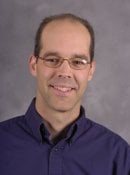Raymond Shaw is the principal investigator on a project that has received a $35,591 research and development contract from the Brookhaven National Laboratory. The project is titled “Brookhaven National Laboratory Joint Appointment.” This is a potential two-year project.
About Raymond Shaw
Dr. Shaw’s research involves the physics of the Earth’s atmosphere, with an emphasis on clouds and experimental tools for studying clouds. Research in Shaw’s group has focused on understanding the influence of turbulence on cloud particle growth through condensation and collisions, and on understanding the nucleation process through which ice forms from liquid water. Shaw’s group is actively involved in the development of methods for studying clouds in controlled conditions in the laboratory as well as in the atmosphere itself. For example, digital holography is applied to particle tracking in turbulent laboratory clouds, and to measurement of particle size distributions in clouds sampled by research aircraft. The Cloud Physics Laboratory is the home of several exciting research studies.
About the Physics Department
Physicists at Michigan Technological University help students apply academic concepts to real-world issues. Our physicists take on the big questions to discover how the universe works—from the smallest particles to the largest galaxies. The Physics Department offers three undergraduate degrees and three graduate degrees. Supercharge your physics skills to meet the demands of a technology-driven society at a flagship public research university powered by science, technology, engineering, and math. Graduate with the theoretical knowledge and practical experience needed to solve real-world problems and succeed in academia, research, and tomorrow’s high-tech business landscape.
Questions? Contact us at physics@mtu.edu. Follow us on Facebook, Twitter, and YouTube for the latest happenings. Or read more at the Physics Newsblog.

